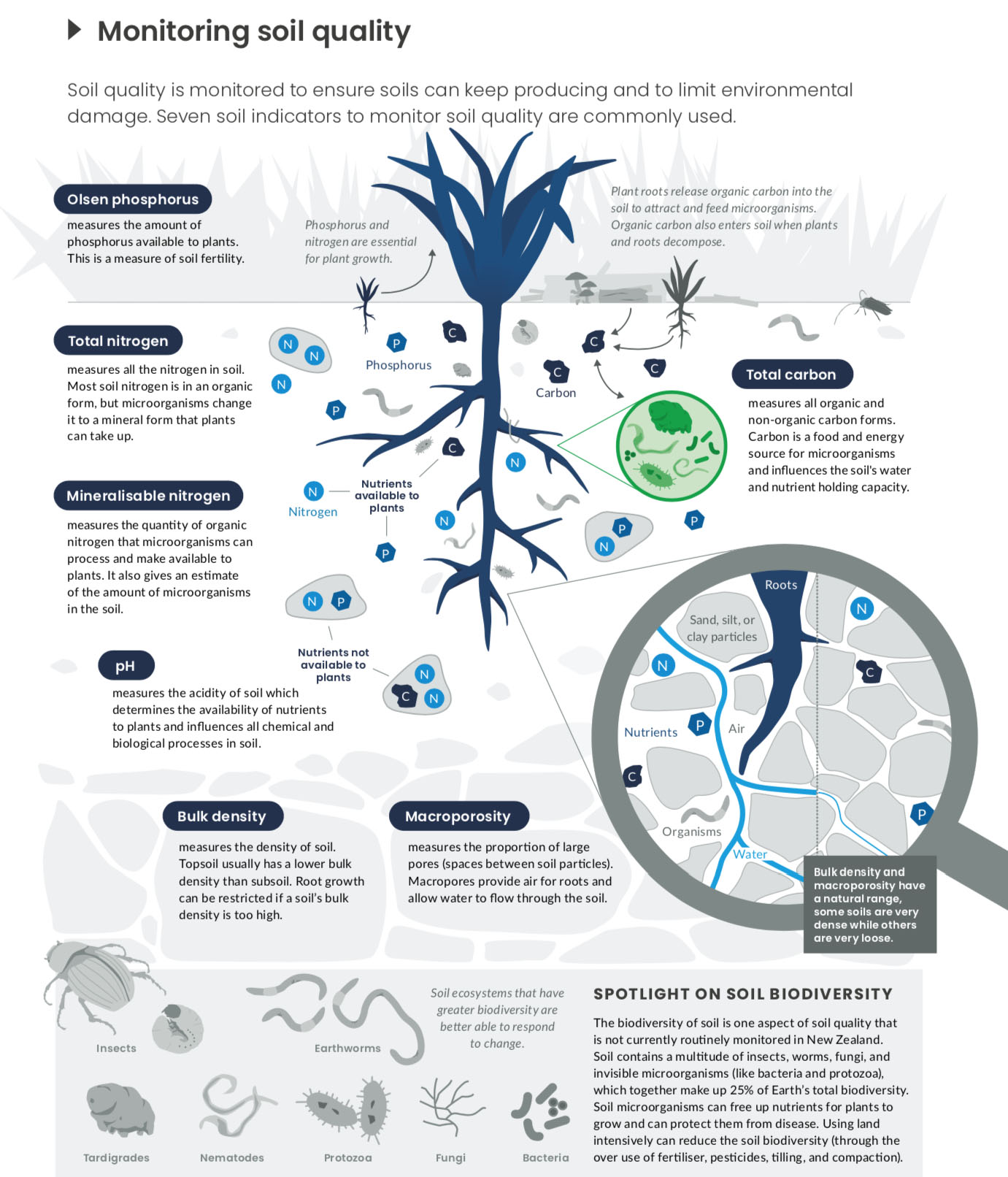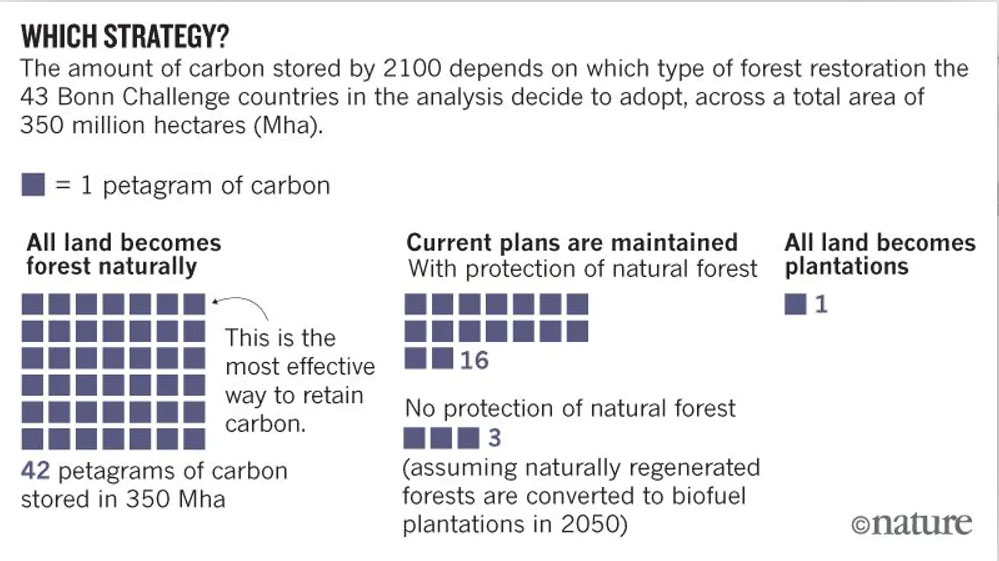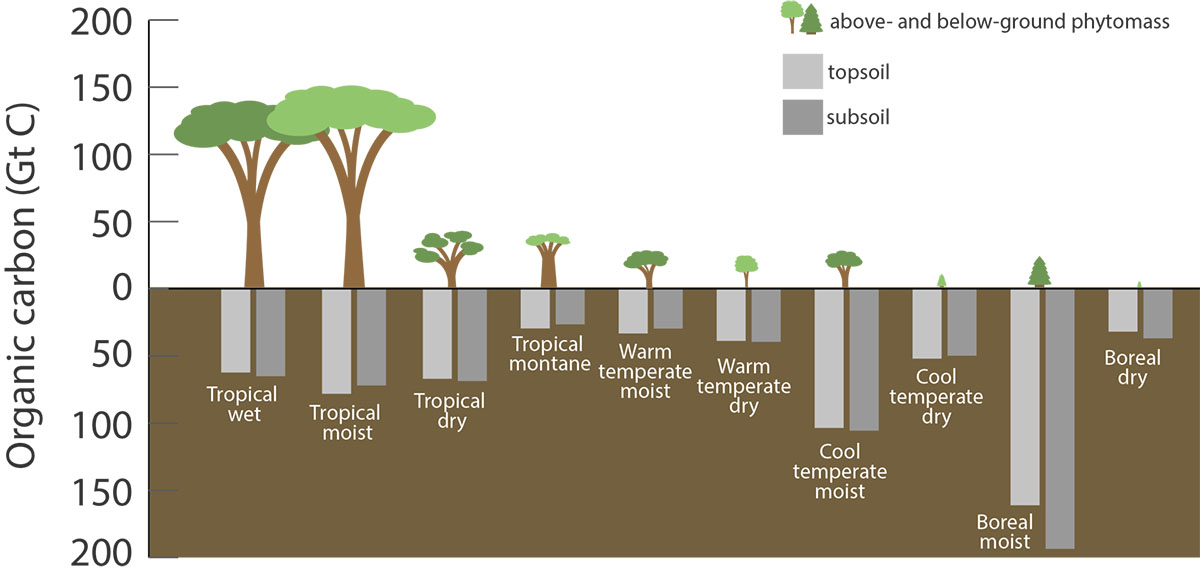Nature-based solutions: soils – carbon sponges
Without healthy soils we wouldn’t exist
“A gram of soil contains around a billion single-celled organisms, including tens of thousands of different species, and if you could tease out the fungal strands, they would stretch for hundreds of kilometres. These are indispensable to life on Earth, including you and me. If they all died, we would soon follow.
“They are dying.”– New Scientist 2023
“Soil is a critical component of the natural environment – yet most people are totally unaware of, or underestimate, the vital role that soil biodiversity plays in the ecosystem services on which we depend.
“Soil hosts one of the largest reservoirs of biodiversity on Earth: up to 90% of living organisms in terrestrial ecosystems, including some pollinators, spend part of their life cycle in soil habitats. The variety of soil components, filled with air and water, create an incredible diversity of habitats for a myriad of different soil organisms that underpin our life on this planet.
“Besides food production, soil biodiversity provides a vast range of ecosystem functions and services, including soil formation, the retention and purification of water, nutrient cycling, the degradation of some soil contaminants and the regulation of greenhouse gases, as well as sustaining plant, animal and human health.
“Without soil biodiversity, terrestrial ecosystems may collapse. We now know that above- and below ground biodiversity are in constant collaboration, and an improved understanding of this relationship will help to better predict the consequences of biodiversity change and loss.” – WWF Living Planet Report 2020
The problems
“Soil erosion processes are notably active in New Zealand: our steep slopes, generally weak sedimentary rocks, and high annual rainfall totals including frequent large rainfall events, underscored by a history of vegetation clearance for agriculture, mean that around 192 million tonnes of soil on agricultural land are lost to erosion every year.” – Landcare Research
The biggest problem in New Zealand is that unless it’s related to the economic performance of agriculture, soils and soil biodiversity is largely ignored. The loss and damage to agricultural soils is the key focus of environmental monitoring and reporting. Currently, we are losing 192 million tonnes of soil a year. That’s the equivalent of four-hundred-thousand dump trucks of soil every week.
We’re also losing up to 2 million tonnes from peaty soils on the the Hauraki plains.
Until recently, in spite of years of research on biochar’s ability to store carbon and fertilise and replenish degraded soils, the carbon component of all soils was also largely ignored. Losing native forests, wetlands, grasslands, peatlands and permafrost means losing large quantities of CO2 back into the atmosphere. Because healthy soils can take decades to millennia to form, losing these soils also reduces their ability to remove CO2 from the atmosphere, while simultaneously losing the life-supporting ecosystems services that soils provide (Video 1).
“Soil contains a multitude of insects, worms, fungi, and invisible microorganisms (like bacteria and protozoa), which together make up 25% of Earth’s total biodiversity. Soil microorganisms can free up nutrients for plants to grow and can protect them from disease. Using land intensively can reduce the soil biodiversity (through the over use of fertiliser, pesticides, tilling, and compaction). The biodiversity of soil is one aspect of soil quality that is not currently routinely monitored in New Zealand.“– Ministry for the Environment (MfE) and Statistics NZ
Agriculture plays a huge role in our economy. But decades of throwing agrichemicals at soils, and destroying the natural soil biodiversity by tilling (ploughing) the ground endlessly, has resulted in a never-ending cycle of decay. While agrichemical companies and banks that support this practice benefit financially, the costs to soil quality and biodiversity, and the financial and emotional toll on farmers’ well-being, is staggering.
The solutions
A radical shift away from these destructive and costly practices is now underway. In New Zealand, Canterbury-based Quorum Sense has been awarded $1.87m to support farmers to develop and share knowledge about regenerative agriculture systems.
This does not solve the problem of losing native soil biodiversity, which underpins native ecosystems. The Climate Change Commission recommended that peat be included in our targets and to find ways to reduce the losses of peat soils.
Manaaki Whenua–Landcare Research is looking into wet agriculture to restore Waikato’s vast peatlands.
It’s also currently stocktaking the amount of carbon in agricultural soils so that any changes can be accounted for in the Emissions Trading Scheme. However, this stocktake does not include the carbon in plantation forestry soils, nor the carbon on native ecosystems’ soils.
An 18-year long grassland biodiversity experiment shows that:
“Plant diversity acts as a natural buffer, preventing soil heating in hot
weather and cooling in cold weather. This diversity effect persists
year-round, intensifying with the aging of experimental communities and
being even stronger under extreme climate conditions, such as hot days
or dry years.” – Huang et al, 2024
The problems for soils in pine forests
Radiata pine is an invasive species that grows fast and is a valuable export product. In the last few years, it’s also been viewed as a lucrative form of ‘carbon farming’, that is, a fast way to capture carbon from the atmosphere and sell the carbon credits to industries under the emissions trading scheme. The government’s billion trees project was in part designed to boost carbon farming. However, the economics meant that native forestry was underfunded. Radiata pine plantations damage soil biodiversity, leading to an increase in carbon dioxide emissions from soils (Figs. 1 & 2). The project also ignored the multiple problems and increasing risks associated with radiata pine.
“…munched on by insects and exposed to microbial bugs in the soil, invading species released 2.5 times the carbon dioxide from the soil into the atmosphere, compared to natives.” – Stuff, 2020
“In a thriving forest, a lush understory captures huge amounts of rainwater, and dense root networks enrich and stabilize the soil. Clearcutting removes these living sponges and disturbs the forest floor, increasing the chances of landslides and floods, stripping the soil of nutrients and potentially releasing stored carbon to the atmosphere. – Jabr, The Social Life of Forests, 2020
A plan favoured by the IPCC in its modelling is to plant lots of fast growing plants like radiata pine, cut them down, burn them for bioenergy, capture the CO2, inject it underground and hope it stays there, grow more radiata pine…repeat, in a process known as BECCs (see here for a fuller explanation).
This strategy means replacing much of the existing native forest on the planet with fast growing trees, destroying irreplaceable life-supporting ecosystem services and releasing carbon locked up in those forests and their soils into the atmosphere, which is the opposite to ‘sustainable.
By 2100 this process would also need to take around 25-46% of the land currently used to feed people.
The solutions
Avoid planting exotics and focus on restoring soils and sequestering carbon long term by restoring native ecosystems including grasslands, forests and wetlands. Because New Zealand has lost 90% of its wetlands, restoring them would create large carbon sinks. Several projects are underway to measure soil carbon, but only in agricultural soils so that they can be included in ourGreenhouse Gas inventory (see for example ‘Soils at Manaaki Whenua‘ and ‘A new national soil carbon monitoring system for agricultural land‘). This ignores the extraordinary value of carbon in native soil biodiversity.
Include native ecosystem soils and peatlands in the Emissions Trading Scheme. This could make native forest and wetland (which includes peatlands and bogs) protection and restoration far more profitable.
The problem of carbon lost from frozen soils
“..melting permafrost is contributing 600 million metric tonnes of net carbon (methane and carbon dioxide) per year into Earth’s atmosphere.” – NOAA’s 2019 report card
Permafrost is a combination of soil, sediment, and the remains of dead plants and animals that stay at or below 0°C for at least two years. Globally, it stores ~1,600 billion tonnes of carbon—more than twice what’s in the atmosphere (Video 1). Most permafrost is in the Northern Hemisphere, however there is also some in New Zealand’s Southern Alps.
Net carbon losses (due in part to our rapidly melting glaciers) in Aoteaora may be small compared to the staggering losses already happening in the Arctic. There may even be a net carbon gain if the exposed areas are re-vegetated. However, the process to create soils following glaciation can takes hundreds-to-thousands of years.
Solution: honest soil carbon accounting
We are not going to reverse the loss of soil carbon from permafrost, but we do need to account for it, and also account for the damage being done to soils in New Zealand by traditional agriculture and silviculture (plantation forestry) and the ongoing expansion of agriculture into our native ecosystems.
For New Zealand to genuinely meet its obligations to reduce net greenhouse gas emissions under the Paris Accord, it would be grossly dishonest to include carbon ‘credits’ in agricultural soils while ignoring how much carbon continues to be lost by the continued destruction of native ecosystems. In just 5 years, we’ve lost over 113,000 hectares of native habitat. Research and monitoring by NIWA shows that native ecosystems are absorbing far more carbon dioxide than expected. Placing a carbon ‘value’ on natural ecosystems including peatlands is essential in order to protect them, by requiring those responsible for destroying them to pay the full carbon cost as well as the cost of lost ecosystem services.





